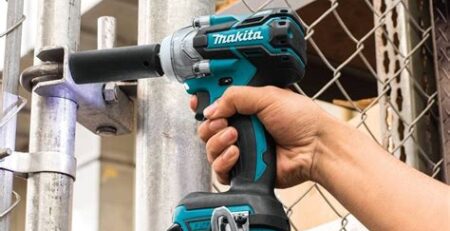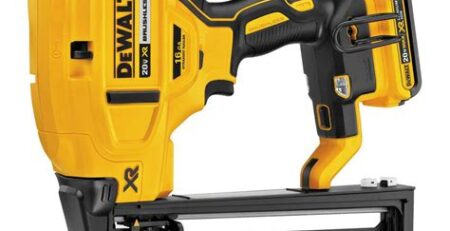How to Maximize the Versatility of Your Bench Grinder
If you’re a DIY enthusiast or a professional craftsman, you probably already know the value of having a reliable bench grinder in your workshop. However, what you may not realize is just how versatile this tool can be. In this blog post, we will delve into the various ways you can maximize the versatility of your bench grinder to make the most out of this essential piece of equipment. From understanding the different attachments available for your bench grinder to exploring the wide range of applications it can be used for, we will cover it all. We will also discuss the importance of using the right grit for different grinding tasks and provide tips for mastering the techniques for sharpening tools with your bench grinder. Additionally, we will highlight the importance of enhancing safety measures while using this powerful tool. By the end of this post, you will have a newfound appreciation for the multitude of tasks your bench grinder can handle. So, let’s dive in and discover how to take your bench grinder skills to the next level!
Understanding the Different Attachments for Your Bench Grinder
When it comes to using a bench grinder, having the right attachments can make all the difference in the world. Whether you’re looking to sharpen tools, remove rust, or polish metal, there are a variety of attachments available to help you get the job done.
One common attachment for a bench grinder is the wire wheel brush, which is used for removing rust and corrosion from metal surfaces. The wire wheel brush comes in various sizes and wire thicknesses, allowing you to choose the right one for your specific task.
Another useful attachment is the grinding wheel, which can be used for sharpening tools and shaping metal. Grinding wheels come in different grits, which determine how smooth or rough the finished product will be. Understanding the different grits available can help you choose the right one for your needs.
Additionally, there are also polishing and buffing wheels that can be used to give metal a smooth, shiny finish. These attachments can be a great addition to your bench grinder, especially if you need to polish metal surfaces for a professional-looking result.
Exploring Various Applications for Your Bench Grinder
When it comes to using your bench grinder, there are a multitude of applications that go beyond just sharpening tools. One of the most common uses for a bench grinder is to sharpen metal objects such as chisels, drill bits, and knives. The grinding wheels on a bench grinder are specifically designed for this purpose, and with the right technique, you can achieve a razor-sharp edge on any metal tool. It’s important to take your time and follow the proper safety precautions when using your bench grinder for sharpening tasks.
Another useful application for your bench grinder is for shaping and smoothing metal surfaces. Whether you’re working on a metal sculpture or need to smooth out a rough weld, a bench grinder can be the perfect tool for the job. By using different grinding wheels and adjusting the speed of the grinder, you can achieve the perfect finish on your metal projects.
In addition to metal, a bench grinder can also be used to sharpen and shape other materials such as plastic and wood. With the right attachments and grinding wheels, you can achieve precise shaping and smoothing for a variety of materials. This versatility makes the bench grinder a valuable tool for any workshop or DIY enthusiast.
Lastly, a bench grinder can be used for cleaning and polishing metal objects. By using a wire wheel attachment, you can remove rust, paint, and other blemishes from metal surfaces. Additionally, by using a polishing wheel, you can achieve a mirror-like finish on metal objects. This makes the bench grinder a multi-functional tool for a wide range of projects.
Utilizing Different Grits for Different Grinding Tasks
When it comes to using your bench grinder for different grinding tasks, one of the most important factors to consider is the grit of the grinding wheel. Grit refers to the size of the abrasive particles embedded in the wheel, and different grits are suitable for different tasks.
For rough grinding and removing large amounts of material, a lower grit wheel, such as 36 or 60 grit, is ideal. These coarser wheels are designed to quickly and efficiently remove material, making them perfect for tasks like shaping metal or sharpening tools.
On the other hand, for finer grinding and polishing tasks, a higher grit wheel, such as 120 or 240 grit, is more suitable. These finer wheels are perfect for achieving a smooth and polished finish on metal, wood, or other materials.
It’s important to match the grit of the grinding wheel to the specific task at hand in order to achieve the best results. Using the wrong grit can result in inefficient grinding, excessive wear on the wheel, and potentially damage to the material being worked on.
Mastering the Techniques for Sharpening Tools with Your Bench Grinder
When it comes to using a bench grinder for sharpening tools, there are a few key techniques that can make all the difference in the quality of your work. One of the most important things to keep in mind is to always maintain a consistent angle while sharpening. Whether you’re working on a chisel, a knife, or any other tool, the angle at which you hold the tool against the grinding wheel will determine the sharpness of the edge. Practice maintaining a steady hand and a consistent angle to achieve the best results.
Another crucial technique for sharpening tools with a bench grinder is to use the entire surface of the grinding wheel. It can be tempting to focus on one spot, especially if there is a particularly dull area on the tool, but this can result in an uneven sharpening. Instead, work the tool across the entire surface of the wheel to ensure an even and consistent sharpening.
It’s also important to pay attention to the speed and pressure at which you’re sharpening the tool. Some materials will require a faster speed and lighter pressure, while others may need a slower speed and more pressure. Experiment with different speeds and pressures to find the right combination for the specific tool you’re sharpening.
Finally, always remember to follow proper safety precautions when sharpening tools with a bench grinder. Wear eye protection to shield your eyes from any debris that may fly off the grinding wheel, and always keep your hands a safe distance away from the wheel to avoid any potential accidents.
Enhancing Safety Measures while Using Your Bench Grinder
When it comes to using your bench grinder, safety should always be the top priority. One of the most important safety measures is to always wear protective gear such as safety goggles, gloves, and a face shield. This will help protect you from any flying debris or sparks that may occur during the grinding process.
Another crucial safety measure is to ensure that your work area is clear of any obstructions and clutter. This includes removing any loose clothing, jewelry, or accessories that could potentially get caught in the grinder. Additionally, it’s important to keep the area well-lit and well-ventilated to prevent accidents and exposure to harmful dust or fumes.
Before using your bench grinder, it’s essential to check for any damaged or worn-out parts. This includes inspecting the grinding wheels, tool rests, and safety guards. Any defects or issues should be addressed immediately to prevent accidents or injuries from occurring.
Lastly, it’s crucial to familiarize yourself with the proper techniques for using a bench grinder. This includes understanding the correct positioning of your hands and the proper angle for grinding. By mastering these techniques, you can greatly reduce the risk of accidents while using your bench grinder.
Frequently Asked Questions
What are the different attachments for bench grinders?
Some common attachments for bench grinders include wire wheels, buffing wheels, and grinding wheels. Each attachment serves a different purpose and can be used for various tasks such as polishing, sharpening, and grinding.
What are the various applications for bench grinders?
Bench grinders can be used for tasks such as sharpening tools, shaping metal, removing rust, and polishing surfaces. They are versatile tools that can be used in woodworking, metalworking, and other DIY projects.
How can different grits be utilized for different grinding tasks with a bench grinder?
Different grits of grinding wheels can be used for various tasks. Coarse grits are suitable for heavy material removal, while finer grits are ideal for precision grinding and sharpening. It is important to select the appropriate grit for the specific task at hand.
What techniques can be mastered for sharpening tools with a bench grinder?
When sharpening tools with a bench grinder, it is important to maintain the correct angle and apply consistent pressure. Additionally, cooling the tool frequently during the sharpening process can prevent overheating and maintain the tool’s temper.
How can safety measures be enhanced while using a bench grinder?
To enhance safety while using a bench grinder, it is important to wear appropriate eye protection and use the tool’s adjustable tool rests to keep the workpiece stable. Additionally, it is crucial to avoid applying excessive pressure or forcing the workpiece against the grinding wheel.













Leave a Reply